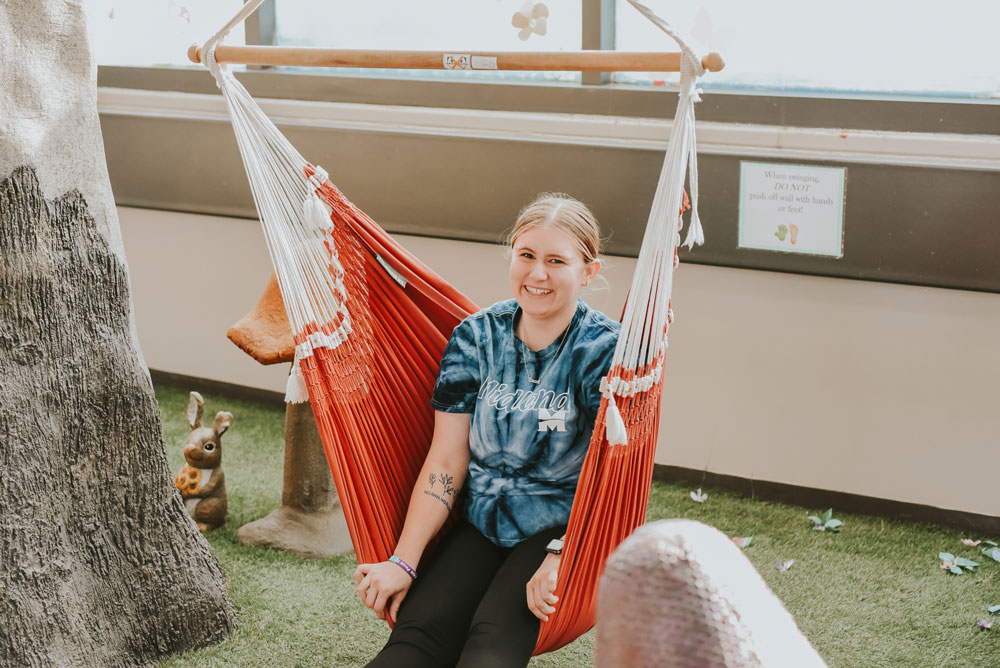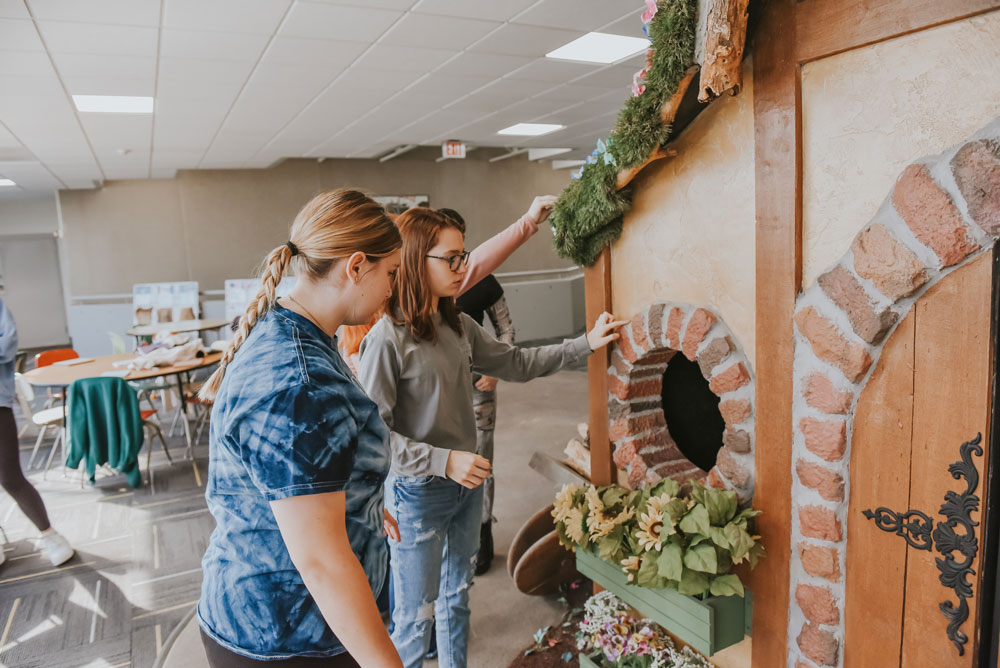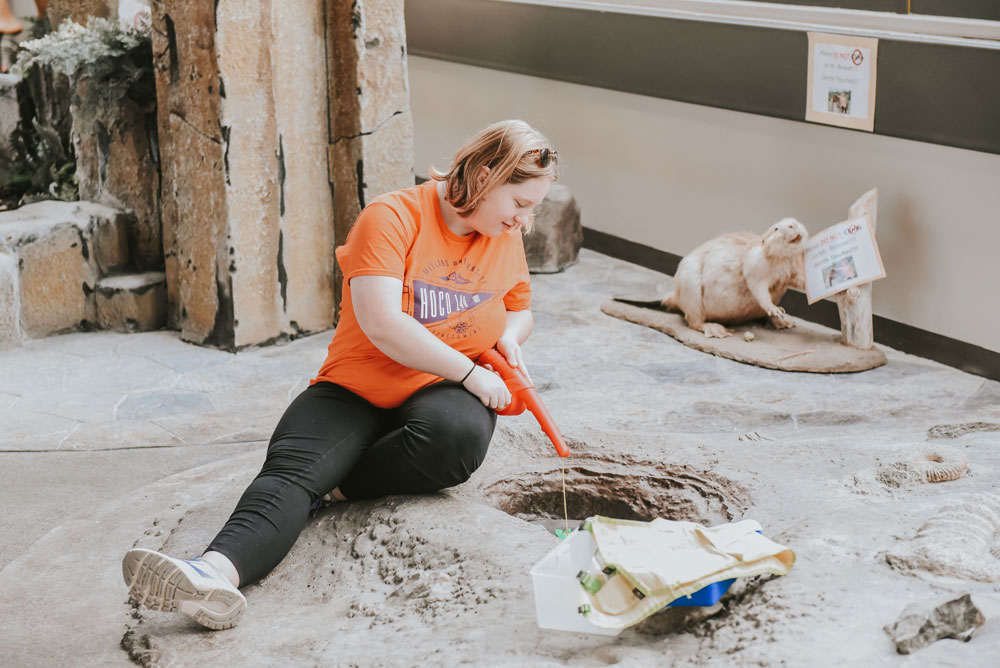Student teaching is a great way for future educators to acclimate themselves to what the classroom experience is all about, but for many students, that opportunity doesn’t come until their final year of college.



For education students at Midland University, getting into the classroom early in their college career is providing invaluable opportunities.
“From the time our students are freshmen, they are taking part in field-based experiences,” said Chandra Bombeck, Assistant Professor with the Walker School of Education. “I think it’s one of the really neat things Midland provides. It gives students the opportunity to not only figure out early on if teaching is right for them, but what level they want to teach, from preschool to high school. We have something for them right away that helps them solidify a plan and know which direction they want to go. Not all universities do that.”
Bombeck is making sure her students are getting a wider view of what teaching is all about. Each semester, Bombeck’s Early Childhood Special Education class visits the Sensory Courtyard in Fremont. The class is primarily sophomore students and involves students interested in Special Education, Early Childhood Development, as well as Elementary Education majors and Human Services majors.
The Sensory Courtyard is an 80 x 30-foot space utilized by Fremont Public Schools. It consists of special areas designed to spark a variety of senses, including sight, sound, smell, and touch. It offers an atmosphere of sensory stimulation and enhances awareness to support students with special needs.
Bombeck has been taking classes to visit the Courtyard since it opened in 2015. “When I was teaching about vision impairments, I reached out to Fremont Public Schools and Mary Robinson, who helped create the Courtyard,” Bombeck said. “After visiting, I knew it was a place I needed to bring my students. Not only are they able to tour and see everything that was created, but they’ve been able to learn teaching strategies from Mary.”
Robinson created this space when a student with a vision impairment inspired her. She saw that he was afraid to touch things, and being comfortable with a sense of touch is essential for someone who is visually impaired and may need to start learning Braille. The Sensory Courtyard gives students with visual impairments a chance to explore the environment in a safe way. The space is not just for students who are blind or visually impaired but is a place where students with autism and other sensory needs can find a sense of calmness and can explore and learn new things in this environment.
Students are able to get a closer look at the many features of the Courtyard, including everything from a Hobbit House to a waterfall to the Snoezelen Room, a dark space illuminated by glowing lights.
“Getting out of the classroom and seeing places like the Courtyard is important because not everyone will have that opportunity,” said Alyssa Denman, an Elementary Education major with an endorsement in Early Childhood Education. “Learning doesn’t have to take place only in the classroom, which makes taking field trips like this very crucial. Learning is everywhere.”
Bombeck said the main impetus behind the students’ visit to the Sensory Courtyard is to challenge them to come up with ideas for their own classroom.
“We want them to take what they have seen and find an inexpensive way to incorporate that into their own classrooms,” she said. “They need to learn what types of students it will benefit and identify what disability it will impact. I recently visited the classroom of a former student who is now a third-grade teacher, and I got to see some of the things we saw in the Courtyard come alive in her classroom.”
“We discussed many of the ways we could utilize what we saw in our own classrooms. From creating smaller water features to light features and different smells, there were so many cool ideas we could take from the Courtyard.”
Denman said viewing all the different features the Courtyard offered will help plant the seed for new ideas when she is putting together her own classroom. “As a future educator, you are able to see what you could incorporate into your own classroom,” she said. “It doesn’t have to be expensive, but it allows you to have something that benefits everyone. You can see what is going to help make students successful.”
As the Courtyard continues to grow with new concepts, Midland students are able to help play a part in that growth. Following their most recent visit in the fall, students brainstormed ideas for new additions to the Courtyard. Thanks to Bombeck’s connection with Thrivent Action Teams, $250 grants are available that can be used to help purchase additional items for the Courtyard. “They are always looking to add items, and that comes through donations,” Bombeck said. “We are always grateful for experts in their field who help our future teachers, and now this gives us an opportunity to give back.”
The Sensory Courtyard is just one of many avenues Midland education students have to get a sense of what teaching is all about. “Students might not always think about how their environment shapes their teaching, and this is a good place for them to start thinking about that,” Bombeck said. “They can learn from me in the classroom, but it helps them to be able to see how other teachers operate and how they can implement helpful ideas. It gives our students experience of what it’s like in the real world and how it impacts them. It gives them a better understanding of what we can do to help kids.”
